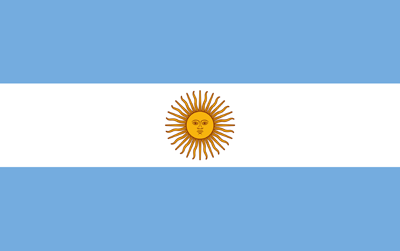The textile industry operates within one of the most intricate and globalized supply chains in manufacturing. From spinning mills in India to garment factories in Bangladesh and home textile units in Pakistan, every component must work seamlessly to ensure timely delivery and consistent product quality. However, managing such a supply chain comes with multiple challenges that can disrupt production, inflate costs, and impact customer satisfaction. At Vigour Impex, we understand these hurdles intimately through years of working with clients and suppliers across continents. In this article, we explore the ten most common textile supply chain issues and practical strategies to resolve them, with a focus on yarn sourcing, garment production, and home textiles. These insights are essential for manufacturers, buyers, and textile-sourcing companies aiming to stay competitive in today’s rapidly evolving global marketplace.
1. Managing Supply Chain Complexities
The textile supply chain is vast and includes diverse players such as raw material suppliers, fabric mills, dyeing units, logistics providers, and manufacturers spread across different countries. The COVID-19 pandemic and global shipping crises exposed major vulnerabilities in these traditional networks. Frequent disruptions, shipping delays, and poor coordination between stakeholders continue to be major pain points.
- Build Strong Relationships with Suppliers: Develop strategic, long-term relationships with reliable suppliers and vendors to foster consistency and trust.
- Utilize Supply Chain Management Software: Invest in digital SCM tools to monitor real-time data on shipments, production schedules, and inventory levels.
- Develop a Comprehensive Risk Management Strategy: Create contingency plans with backup suppliers, alternate shipping methods, and stock buffers.
- Diversified Sourcing Locations: Spread sourcing across multiple countries to reduce dependency on any one region.
2. Quality Control Issues
Ensuring consistent textile quality remains difficult due to regional variations in manufacturing standards. Quality concerns such as inconsistent dyeing, poor stitching, loose weaves, or low-grade yarn are common in global sourcing.
- Standardize Quality Benchmarks: Define clear quality metrics and documentation (GSM, colorfastness, thread count, etc.) to be followed by all suppliers.
- Regular Audits and Inspections: Perform in-line and final product inspections at multiple stages, from weaving to packaging.
- Third-Party Quality Control: Employ certified third-party agencies to conduct unbiased quality assessments.
- Training and Collaboration: Work closely with suppliers to educate them on buyer requirements and industry certifications like ISO or OEKO-TEX®.

3. Market Demand and Fashion Trends
The fashion and home textile sectors are highly trend-driven. Rapid changes in consumer preferences can render stock obsolete or cause shortages of in-demand items. Predicting future styles and colours is particularly challenging for textile-buying houses.
- Stay Updated with Fashion Forecasting: Subscribe to fashion intelligence platforms like WGSN, and attend fabric trade shows and expos.
- Collaborate with Designers and Merchandisers: Engage regularly with product developers to stay ahead of seasonal trends.
- Agile Sourcing Models: Build flexible sourcing strategies that can adapt to quick changes, such as just-in-time ordering or capsule collections.
- Utilize Historical Sales Data: Analyze past customer preferences to forecast future demand more accurately.
4. Regulatory Compliance
Different countries impose different rules on textiles regarding labelling, chemical use, labour standards, and environmental practices. Navigating these laws is time-consuming and error-prone, especially for companies sourcing from multiple regions.
- Stay Informed: Maintain a dedicated compliance team or partner with regulatory consultants who track textile-related updates from global markets.
- Work with Certified Suppliers: Source from suppliers with certifications like GOTS, ISO 14001, or SA8000 to ensure environmental and labor compliance.
- Conduct Regular Compliance Audits: Regularly inspect supplier factories for adherence to local labor laws and international standards.
- Maintain Proper Documentation: Ensure you have up-to-date MSDS (Material Safety Data Sheets), test reports, and audit records to demonstrate compliance.
5. Communication Challenges
Time zone differences, language barriers, and lack of standardized communication protocols can lead to errors in sampling, order confirmation, and shipping.
- Use Digital Communication Platforms: Leverage Slack, Microsoft Teams, or Zoom for real-time and asynchronous communication.
- Hire Multilingual Coordinators: Employ staff fluent in supplier languages to ensure clarity.
- Establish SOPs (Standard Operating Procedures): Define structured communication processes for sampling, approvals, and order confirmations.
- Regular Update Meetings: Conduct weekly update calls with suppliers to monitor order progress.
6. Technology Integration
Although digital transformation is sweeping the industry, many textile manufacturers still rely on outdated systems. Integrating new technologies like ERP or AI-driven forecasting can be costly and complex.
- Adopt Integrated ERP Systems: Choose ERP solutions designed for the textile industry that offer features like yarn tracking, dye lot management, and production planning.
- Train Staff Consistently: Conduct regular workshops and training sessions to keep your team updated on digital tools.
- Work with Technology Partners: Collaborate with digital solution providers who specialize in textile manufacturing.
- Introduce Digital Sampling: Reduce sample approval times using 3D sampling and virtual prototyping.

7. Short Lead Times
The rise of fast fashion and e-commerce has led to expectations of shorter delivery cycles, often putting enormous pressure on manufacturers.
- Streamline Internal Workflows: Use lean manufacturing principles to reduce non-productive time.
- Maintain Ready Stock: Hold inventory of essential yarns or fabrics to reduce production initiation time.
- Partner with Quick Turnaround Vendors: Work with suppliers who specialize in speed without compromising quality.
- Use Expedited Logistics: Opt for air freight or prioritized sea freight lanes during peak seasons.
8. Handling Minimum Order Quantities (MOQs)
Suppliers often set high MOQs that are difficult for smaller brands or seasonal collections to meet. This leads to waste or increased cost per unit.
- Negotiate MOQ Flexibility: Negotiate tiered MOQs based on fabric types, yarn categories, or repeat order assurances.
- Consolidate Orders: Combine orders across clients or departments to meet supplier thresholds.
- Explore Digital and On-Demand Production: Consider digital textile printing or localized production hubs for smaller runs.
- Engage MOQ-Friendly Vendors: Identify and work with mills that cater to small and medium businesses.
9. Market Volatility
The prices of cotton, synthetic yarns, dyes, and shipping rates can fluctuate dramatically due to global market instability, labour unrest, or supply-demand imbalances.
- Monitor Raw Material Prices: Use commodities tracking tools to follow price trends of cotton, polyester, viscose, and dyes.
- Develop Flexible Pricing Strategies: Include clauses in contracts that allow for price adjustments based on global indices.
- Diversified Supplier Base: Source similar raw materials from different countries to reduce geopolitical dependency.
- Lock-in Pricing Agreements: Use forward contracts with suppliers to stabilize costs.
10. Risk Management
Supply chain disruptions caused by pandemics, political unrest, or climate-related disasters can lead to severe operational and financial losses.
- Develop a Risk Register: Identify all possible risks in your supply chain and score them based on impact and probability.
- Create Business Continuity Plans: Design backup plans for critical operations like production, sourcing, and shipping.
- Insurance Coverage: Ensure adequate insurance for goods-in-transit, liability, and business interruption.
- Monitor Global Events: Use geopolitical and weather monitoring tools to stay updated and proactive.
Final Thought
For companies like Vigour Impex, managing a reliable, transparent, and agile textile supply chain is key to sustaining success in a global marketplace. By addressing these ten common challenges head-on ranging from regulatory compliance and technological upgrades to quality assurance and lead time pressures buyers and manufacturers can gain greater control over their operations and boost their competitiveness. At Vigour Impex, we help clients navigate these challenges with customized solutions, whether it’s finding the right yarn supplier, ensuring fabric consistency, or coordinating timely garment delivery. Our expertise spans cotton sourcing, synthetic yarn procurement, home textiles, and fashion garment production. Partner with us to build a supply chain that is as resilient as it is responsive to market needs.
Being aware of potential pitfalls and planning proactively is no longer optional. It is a necessity in today’s fast-moving textile industry. With strategic planning, robust technology adoption, and a partner like Vigour Impex, supply chain efficiency is not just possible, it becomes a competitive edge.







